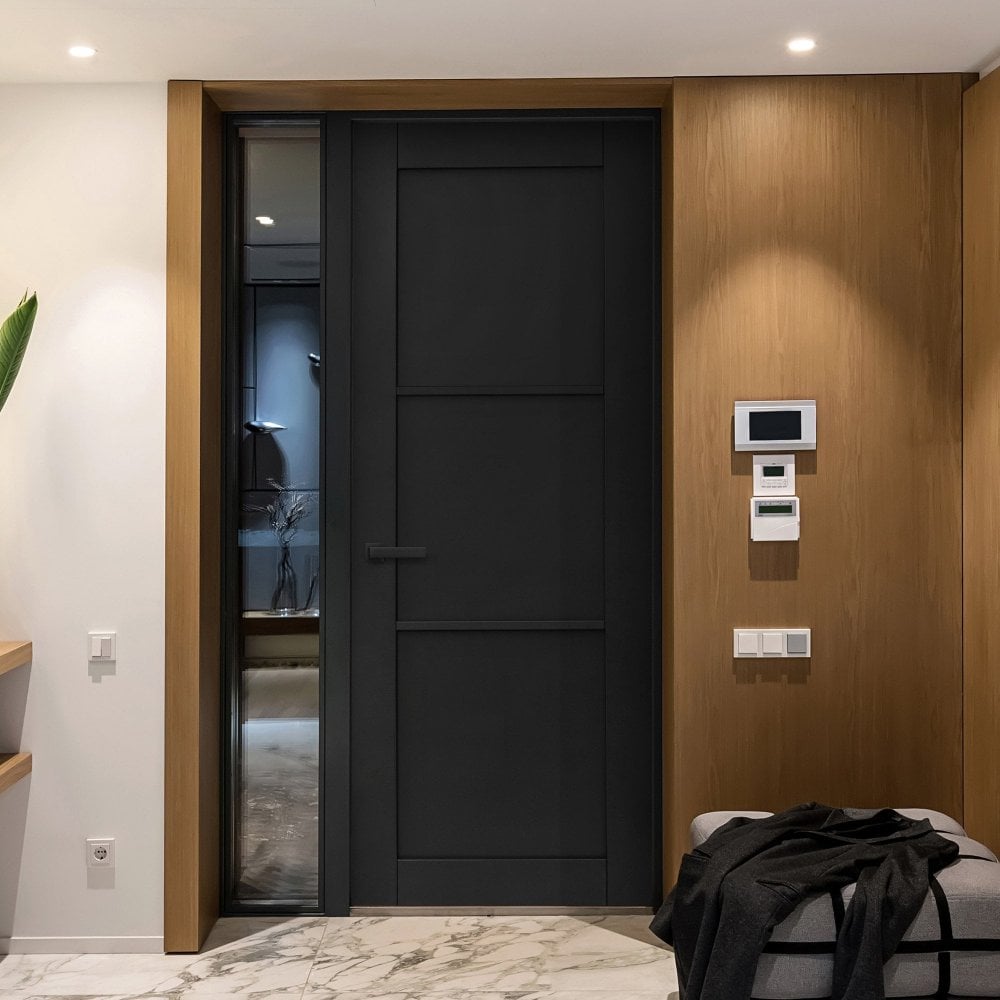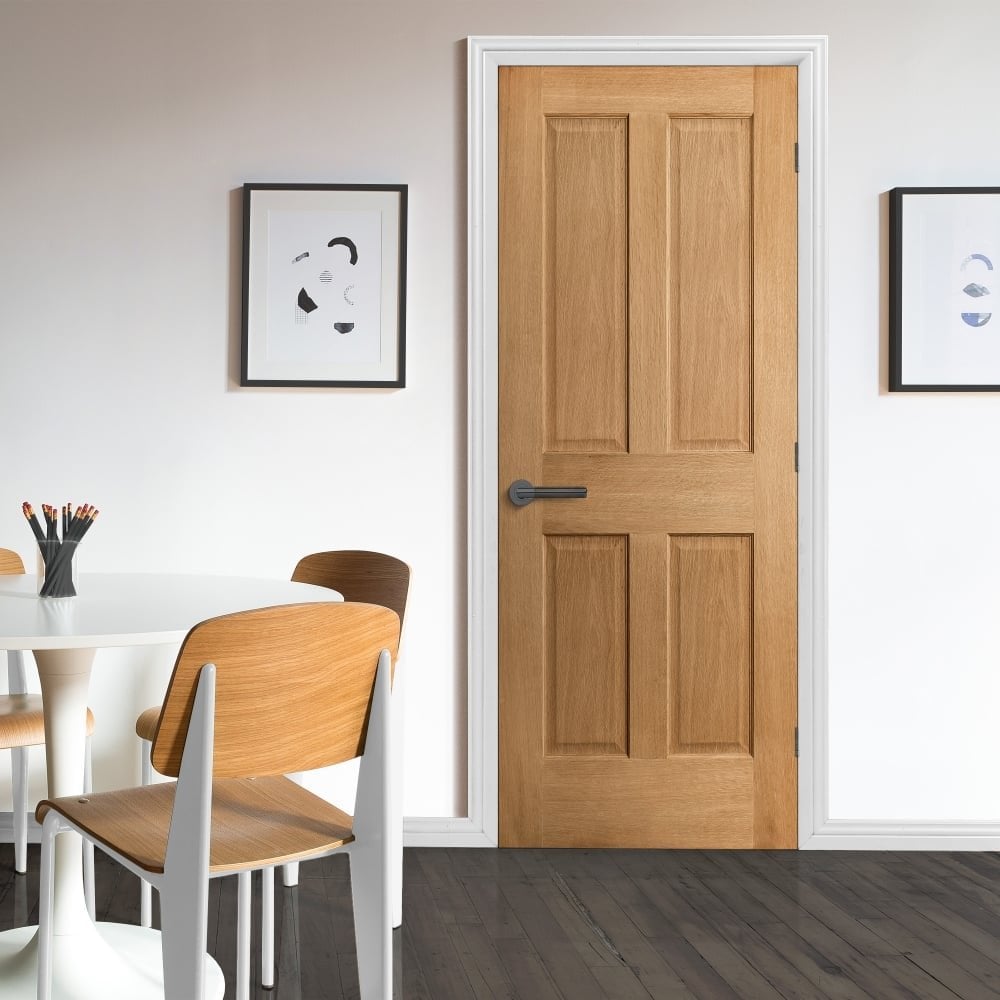Fire safety is a critical aspect of protecting lives and property in both residential and commercial settings. Among the various measures to prevent and mitigate fire-related incidents, fire doors play an indispensable role. These specially designed doors can mean the difference between life and death in an emergency by containing the spread of flames and smoke.
In this article, we will delve into the significance of fire doors in home and workplace safety, exploring their functions, features, legal requirements in the United Kingdom, and maintenance tips. By understanding their importance, you can make informed decisions about fire safety.



What Are Fire Doors?
Fire doors are specially constructed doors designed to prevent or slow the spread of fire, heat, and smoke between different sections of a building. Unlike standard doors, fire doors are built with fire-resistant materials and often incorporate seals and other mechanisms to enhance their effectiveness.
They play a crucial role in compartmentalising a structure, creating safe zones that delay the fire’s spread and provide occupants with more time to escape. By containing the fire, these doors also minimise damage to property and give firefighters a safer environment to work in.
How Do Fire Doors Work?
Fire doors operate by forming a barrier against flames and smoke. Their performance relies on several critical components, including:
- Fire-Resistant Materials: The door’s core is constructed from materials like solid timber, steel, or fire-resistant glass.
- Intumescent Seals: These are strips around the edges of the door that expand under heat, sealing the gaps to block smoke and fire.
- Self-Closing Mechanisms: Ensures the door automatically closes when opened, maintaining the barrier.
- Fire-Rated Frames: The frame must also be constructed to resist fire for the same duration as the door.
Fire doors are rated based on the time they can withstand fire, typically FD30 (30 minutes) or FD60 (60 minutes), providing varying levels of protection.
Key Features of Fire Doors
Fire doors are distinct from regular doors due to their construction and components. Some essential features include:
- Heat-Resistant Core: The core, made from solid timber or composite materials, resists high temperatures.
- Intumescent Seals: Expand to fill any gaps and block smoke when exposed to heat.
- Glazing (if applicable): Fire-resistant glass panels that maintain visibility without compromising safety.
- Certified Hardware: Hinges, locks, and handles that meet fire safety standards.
- Automatic Closing Devices: Ensure doors close even if left ajar.
The Legal Framework for Fire Doors in the UK
In the UK, fire doors are a critical component of fire safety regulations. Key legal requirements include:
Fire Safety Act 2021
The Fire Safety Act 2021 clarified responsibilities for ensuring fire safety in multi-occupancy residential buildings. Building owners and managers must ensure fire doors are properly installed, maintained, and tested.
Building Regulations
Approved Document B of the Building Regulations mandates the installation of fire doors in specific areas, such as:
- Escape routes in all buildings.
- Compartmentalised sections of multi-storey buildings.
- High-risk areas, including kitchens, boiler rooms, and server rooms.
Failure to comply with these regulations can result in severe penalties, including legal action and fines.
Fire Doors in Homes: Why Are They Essential?
While often associated with commercial settings, fire doors are equally crucial in residential properties, particularly in:
- Multi-Storey Homes: They prevent the fire from spreading between floors, allowing more time for occupants to evacuate safely.
- Integrated Garages: A fire door between a garage and the living space protects the home from garage fires.
- Flats and Apartments: These typically require fire doors for each unit and along escape routes to comply with regulations.
Fire Doors in the Workplace: Compliance and Safety
In workplaces, fire doors are not merely a recommendation but a legal requirement under the Regulatory Reform (Fire Safety) Order 2005. Employers and building managers are responsible for ensuring fire doors are installed and functional.
High-Risk Areas in Workplaces
Specific areas in commercial buildings that require fire doors include:
- Server Rooms: Protect critical equipment from fire.
- Kitchens: Contain fires originating from cooking activities.
- Storage Areas: Safeguard areas with flammable materials.
Materials and Construction of Fire Doors
Fire-Resistant Materials
The core materials used in fire doors include:
- Solid timber.
- Steel.
- Fire-resistant glass reinforced with a special coating.
Intumescent Seals
These seals are a key feature of fire doors. When exposed to heat, they expand, sealing gaps around the door and preventing smoke from leaking through.
Installation of Fire Doors: Professional Requirements
Proper installation is vital for a fire door to function effectively. Fire doors should only be installed by certified professionals who adhere to British Standards, such as BS 476 or BS EN 1634. Incorrect installation can render a fire door ineffective, compromising safety.
Common Misconceptions About Fire Doors
- Myth: Fire doors are only necessary in large buildings.
- Fact: Fire doors are vital in both small and large buildings to protect lives and property.
- Myth: Fire doors should remain open for convenience.
- Fact: Fire doors must remain closed or be equipped with automatic closing mechanisms to function effectively.
Maintaining and Inspecting Fire Doors
How to Identify Faulty Fire Doors
Signs that a fire door may need attention include:
- Gaps larger than 4mm around the edges.
- Damaged intumescent seals.
- Faulty self-closing mechanisms.
- Warped or damaged door surfaces.
Frequency of Inspections
Fire doors should be inspected every six months or more frequently in high-traffic areas.
Upgrading Older Properties with Fire Doors
Older buildings often lack modern fire safety measures. Retrofitting fire doors in high-risk areas can significantly improve fire safety.
Signs You May Need New Fire Doors
- Warped or damaged doors.
- Worn-out seals or hardware.
- Missing certifications indicating fire resistance.
The Role of Fire Doors in Building Evacuation Plans
Fire doors are integral to a building’s evacuation plan. By containing fire and smoke, they maintain clear escape routes and protect key exit points.
Fire Door Certifications and What to Look For
When purchasing fire doors, ensure they carry certifications such as:
- BWF-Certifire Label: Indicates compliance with UK fire safety standards.
- BS EN 1634 Certification: Demonstrates tested fire resistance.
Conclusion
Fire doors are essential for protecting lives and property in homes and workplaces. Their ability to contain fire and smoke provides crucial time for evacuation and limits damage. By understanding their functions, legal requirements, and maintenance needs, you can ensure your building is safer and compliant with UK fire safety standards.

